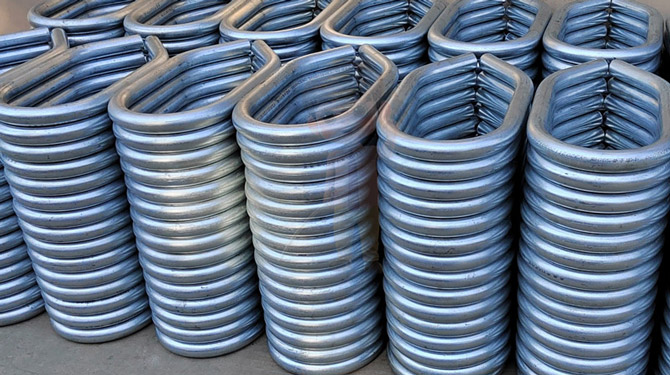Innovations in Aluminum Bending Technology: How Automation is Transforming the Manufacturing Landscape
Aluminum has emerged as one of the most versatile and widely used materials in various industries, ranging from aerospace and automotive to construction and consumer electronics. Its lightweight nature, excellent corrosion resistance, and high strength-to-weight ratio make it a preferred choice for many applications. However, the bending of aluminum poses unique challenges due to its distinct properties, including malleability and sensitivity to deformation. In recent years, innovative technologies, particularly automation, have significantly transformed the aluminum bending process, enhancing efficiency, accuracy, and overall production quality.
Traditionally, aluminum bending involved manual processes that required skilled labor and significant time investment. Techniques such as press braking and rotary bending were commonly employed, but they often resulted in inconsistencies and a higher likelihood of defects. As industries evolved, the demand for faster production times and higher precision led to the introduction of automated bending systems.
Modern aluminum bending machines are equipped with advanced features such as computer numerical control (CNC), which allows for precise control over the bending angle and radius. CNC technology enables manufacturers to produce complex shapes and designs with minimal human intervention, significantly reducing the risk of errors. This shift towards automation not only streamlines the production process but also enhances the overall quality of the finished product.

1.Increased Accuracy and Precision: Automated bending systems utilize sophisticated software and sensors that ensure each bend is executed with high precision. This accuracy is crucial for applications where tight tolerances are required, such as in the aerospace and automotive sectors.
2.Enhanced Production Speed: Automation accelerates the bending process, allowing manufacturers to produce large volumes of components in a shorter timeframe. This increased efficiency meets the rising demand in fast-paced industries and helps businesses remain competitive.
3.Cost Reduction: While the initial investment in automated bending technology may be significant, the long-term cost savings are substantial. Automated systems reduce labor costs, minimize material waste through precise bends, and lower the likelihood of defects that require costly rework.
4.Improved Worker Safety: Automation reduces the need for manual handling and repetitive tasks, which can pose safety risks in the workplace. By minimizing human involvement in potentially hazardous processes, manufacturers can create a safer working environment.
5.Flexibility and Customization: Automated bending machines can be easily programmed to handle different designs and specifications. This flexibility allows manufacturers to quickly adapt to changing market demands and customize products without significant downtime.
Several technological advancements are propelling the automation of aluminum bending forward:
-Artificial Intelligence (AI) and Machine Learning: AI algorithms analyze production data to optimize bending processes in real time, predicting and adjusting for potential errors before they occur.
-Robotics: Robotic arms equipped with specialized tools can perform complex bending tasks with remarkable speed and precision. These systems can work alongside human operators or independently, depending on the production needs.
-3D Modeling and Simulation: Software tools enable engineers to create 3D models of aluminum components and simulate the bending process before actual production. This capability helps identify potential issues and optimize designs for manufacturability.
-Smart Sensors and IoT Integration: The integration of Internet of Things (IoT) technology allows for real-time monitoring of bending processes. Smart sensors can track parameters such as temperature, pressure, and material strain, providing valuable data that can be used to improve efficiency and quality control.
As the aluminum bending industry continues to embrace automation, we can expect further innovations that will redefine manufacturing standards. The convergence of advanced technologies, such as AI, machine learning, and IoT, will enable even greater levels of efficiency and customization. Additionally, as manufacturers strive for sustainability, automated systems that minimize waste and optimize energy consumption will become increasingly important.
In conclusion, the transformation of aluminum bending technology through automation is reshaping the manufacturing landscape. By enhancing precision, speed, and safety, automated bending systems are not only improving production processes but also enabling manufacturers to meet the demands of an ever-evolving market. As innovations continue to emerge, the future of aluminum bending looks bright, offering exciting possibilities for industries worldwide.
29
2025-08
Number of visitors:1
HOT NEWS
-
High-Accuracy Curve Forming: Achieving Consistent Bends in Aluminum, Steel, and Alloy Materials
2025-11-27
-
Advanced CNC Tube Bending Technology: Achieving Consistent and Reliable Precision in Complex Shapes
2025-11-17
-
From Design to Execution: How Profile Bending Transforms Architectural and Industrial Projects
2025-11-10
-
Innovations in Door and Window Bending Processing: Key Techniques for Enhancing Product Quality
2025-11-01




 English
English Chinese
Chinese Japan
Japan German
German

 LIST
LIST
